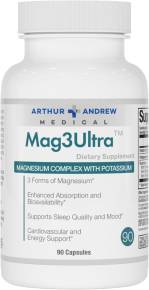Natural Pain Relief for Dogs
Is Your Best Friend In Pain?

I don’t think there is a feeling quite so sad and helpless as seeing your beloved dog in distress. And yet dogs tolerate a great deal of pain, often without complaint.
How to Tell If Your Pet's in Pain
Sometimes it is easy to know when your pet is uncomfortable. If your dog doesn’t like to be handled or yelps when you touch a certain area, it is reasonable to conclude that something is wrong.
There are other, less direct signs a dog is in pain:
- She may hide or have a reduced activity level.
- She may appear fearful or breathe heavily.
- She may stop eating or refuse to go on her beloved walks.
All these can be signs of pain.
When to Call a Professional
At the first sign of pain, your dog should be examined by a trained professional to determine the cause.
Laska's Story
My Siberian husky, Laska, suffered an unusual pain experience.
If you know the breed, you know they have that spitz-curled tail they carry over their bodies like a giant apostrophe. One day, her tail was limp and dragging behind her.
I had never seen her tail like this before. I had seen her tail lowered when she was angry or fearful, but not limp and immobile. She seemed to be fine—she ate, drank, jumped on the sofa next to me. However, I knew something was very wrong.
I took her to the vet, who said she either had a broken or severely strained tail. Bad on me—I didn’t know dogs could break their tails. He told me it was painful, but huskies can be very stoic about pain.
He gave me some pain medicine and said to monitor for a week, and if no improvement, I’d need to bring her back for more x-rays and potential surgery.
Fortunately, her tail was back to normal in a few days, and she was good to go.
Pharmaceuticals for Pain Relief in Pets
This happened many years ago, and the drugs the veterinarian gave me were in a class called nonsteroidal anti-inflammatory drugs, or NSAIDs. I used them without questions because I didn’t want her to be in pain, and I figured the vet was the expert.
Fortunately, we used them for only a few days, but many dogs are on these drugs for months or years.
In humans, these drugs include ibuprofen and naproxen, sold under brand names like Motrin, Advil, and Aleve. Some common NSAIDs for dogs include:
- carprofen (e.g. Rimadyl)
- meloxicam
- robenacoxib (Onsior)
Robenacoxib is approved for only 3 days of use at a time due to toxicity.
The dog owner is faced with some very difficult choices when deciding whether to use these drugs for a dog’s pain, because they can cause serious side effects and shorten the dog’s life.
Side Effects of Carprofen
According to the VCA Veterinary Hospital’s drug side effect page, carprofen’s side effects include “gastrointestinal upset, such as mild vomiting, diarrhea, constipation, fatigue and temporary lack of appetite."
"More serious side effects include liver, kidney, or gastrointestinal damage characterized by severe vomiting, diarrhea, black or bloody stools, bloody vomit, increased drinking and/or urination, yellow skin or eyes, severe lethargy, and persistent lack of appetite."
"Other reported serious side effects include neurologic signs such as incoordination, paralysis, seizures, or disorientation; behavior signs such as restlessness or aggression; skin effects such as itchiness, hair loss, or scabs/wounds; or allergic reactions such as facial swelling or hives."
"Your veterinarian may see blood abnormalities such as low red blood cell or platelet counts. Carprofen may also affect lab tests, such as thyroid levels, liver enzymes, blood cell counts, potassium levels, kidney values, and bleeding times.”
Wow. That is quite a list. Fortunately, there are some excellent natural interventions that do not cause serious side effects or shorten life span.
Natural Pain Relief for Pets
While there are many products that can help with pain and inflammation, some of the most successful and scientifically studied include curcumin, boswellia, hemp phytocannabinoids (of which CBD is only one), glucosamine, and chondroitin.
As research continues, the list of effective supplements for dogs continues to grow.
When we look at scientific research, the progression often begins with cell culture (in vitro) studies, then moves up to animal studies, and if the data is good, on to human studies.
-
Curcumin and Boswellia
In the case of curcumin and boswellia, there are indeed canine studies, but the vast amount of clinical research is on humans.
Therefore, this is a situation where the order is somewhat reversed: The natural medicines have been tested in humans and are now used in dogs!
Though there are few dog studies using these herbs for pain and inflammatory conditions, the safety and human studies prove that an herbal combination of powerful anti-inflammatory herbs can be effective and safe for both long-term and short-term use.
And instead of liver damage, curcumin and boswellia have benefits for liver health.
Studies
Some of the top causes of canine pain are inflammatory conditions, such as:
- joint dysplasia
- arthritis
- disc problems
- injury
Curcumin and boswellia have several published human studies on these conditions, especially arthritis.
There is a canine safety and absorption study on enhanced-absorption curcumin with turmeric essential oil (BCM-95) that demonstrates safety and a 700 percent increase in absorption.
With Celebrex
One human study compared the combination of enhanced absorption curcumin with turmeric oil and high-AKBA boswellia to the prescription drug celecoxib (one brand is Celebrex) for osteoarthritis of the knee.
The herbal combination was significantly better than the drug on overall pain relief, distance walked without pain, and joint line tenderness.
And just as important as the very effective pain relief, the adverse effects were fewer and less severe in the herbal group.
With Meriva
Another human study of the enhanced-absorption curcumin phytosome (Meriva) showed that long term administration of curcumin is both safe and effective for arthritis and other parameters of inflammation.
-
Glucosamine and Chondroitin
I group these two interventions together because they are technically neither anti-inflammatory nor pain relievers, but are instead building blocks to increase joint strength, cushioning, and flexibility.
As the health of the joint improves, inflammation and pain subside, so in the long run, these compounds have excellent potential for pain relief in chronic conditions like arthritis or other forms of disc or joint disease. They are not as useful for short-term, acute pain.
I like using glucosamine and chondroitin together as they address joint health from different perspectives and work well synergistically.
Studies
In a published randomized, double-blind study, for osteoarthritis of the hips or knees:
- 35 dogs were given a combination of glucosamine and chondroitin.
- Another group of dogs was given carprofen.
After 70 days, the veterinarians found:
- The glucosamine/chondroitin group significantly improved in scores for:
- pain
- weight-bearing
- severity of the condition
- The carprofen group also showed significant improvements.
The researchers noted that glucosamine/chondroitin took longer to demonstrate improvement than the drug group but was also much less likely to cause adverse effects.
Precautions
It is important to note that while glucosamine is a small molecule, whether sulfate or hydrochloride, and easy to absorb, chondroitin can be a challenge. Some chondroitin molecules are too large to be absorbed.
Therefore, for an effective supplement, look for a chondroitin used specially in published trials with positive benefits, or one that is controlled for molecular size.
-
Hemp Phytocannabinoids
You notice I did not call this section “CBD.” CBD stands for cannabidiol, which is only one phytocannabinoid from hemp. There are more than 100 found in this amazing plant!
Some of the hemp cannabinoids are anti-inflammatory, some contribute to bone density, some regulate immune activity, and many are involved in controlling or eliminating pain.
Therefore, the full spectrum, which includes a good dose of CBD, is more powerful than using CBD alone.
Note that full-spectrum hemp oil with THC is not marijuana, and the THC in marijuana can cause significant toxicity. The two are not interchangeable.
Studies
The two biggest areas of study on phytocannabinoids in dogs are in pain/inflammatory conditions, and seizures, with positive reports on both.
In a study of canine osteoarthritis, dogs given hemp-derived CBD decreased pain and increased mobility significantly in a dose-dependent manner, meaning higher doses yielded better results. However, dosing can vary considerably, based on the dog’s height and weight.
Another study on hemp-derived CBD for osteoarthritis pain used 2 mg of CBD per kg of body weight twice daily. A kilogram is 2.2 pounds.
According to this formula, a 15 lb. dog would take 12 mg CBD twice daily, and a 50 lb. dog would take 44 mg twice daily.
This is only one formula, based on one study, and other researchers recommend more or less, depending on their own studies.
-
Other Interventions
As usual, this is not an all-inclusive list.
- DHA and EPA, omega-3 fatty acids from fish, are excellent at both prevention and treatment of conditions that cause chronic pain.
- Collagen is a very beneficial building block.
- Green tea extract is both a proven antioxidant and anti-inflammatory for dogs.
“Boswellia serrata: an overall assessment of in vitro, preclinical, pharmacokinetic and clinical data” by M. Abdel-Tawab et al., Clinical Pharmacokinetics
“Carprofen” by R. Gollakner, www.VCAhospitals.com
“Combined chondroitin sulfate and glucosamine for painful knee osteoarthritis . . .” by M.C. Hochberg et al., Annals of the Rheumatic Diseases, 1/16
“Effect of glucosamine and chondroitin sulfate in symptomatic knee osteoarthritis: a systematic review and meta-analysis . . .” by M. Simental-Mendia et al., Rheumatology International, 8/18
“Phytomedicine in joint disorders” by D. Dragos et al., Nutrients, 1/17
“Randomised double-blind, positive-controlled trial to assess the efficacy of glucosamine/chondroitin sulfate for the treatment of dogs with osteoarthritis” by G. McCarthy et al., Veterinary Journal
“A randomized, pilot study to assess the efficacy and safety of curcumin in patients with active rheumatoid arthritis” by B. Chandran and A. Goel, Phytotherapy Research, 11/12
“US veterinarians’ knowledge, experience, and perception regarding the use of cannabidiol for canine medical conditions” by L. Kogan et al., Frontiers in Veterinary Science, 1/19
Cheryl Myers
Cheryl Myers, RN, is an integrative health nurse, author, and expert on natural medicine. She is a nationally recognized speaker who has been interviewed by the New York Times, Wall Street Journal and Prevention magazine. Her articles have been published in Aesthetic Surgery Journal and Nutrition in Complementary Care, and her research on botanicals has been presented at the American College of Obstetrics and Gynecology and the North American Menopause Society. Follow Cheryl on Facebook!
Don't Miss a Thing!
Get the latest articles, recipes, and more, when you sign up for the tasteforlife.com newsletter.

